Inheritor Promotes Traditional Culture Through Xiabu Embroidery
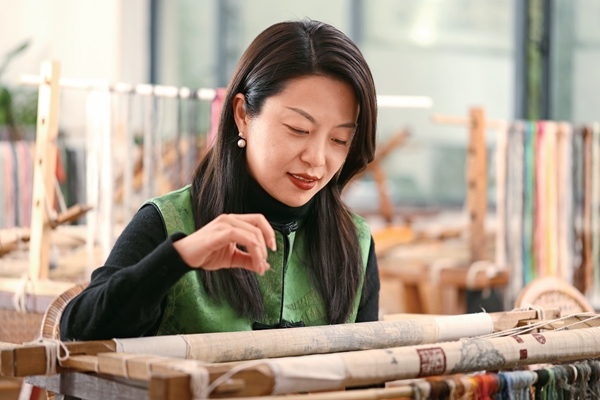
Wu Wanjing is head of Xinyu (a city in east China's Jiangxi Province) Xiabu Embroidery Art Research Institute. As a municipal-level inheritor of xiabu (literally "cloth for summer") embroidery crafts, she has led her team in inheriting and promoting the art form for years. "I think xiabu embroidery is not only a traditional handicraft, but also an expression of culture. I hope my work will help people learn about the craft. I will always do my best to develop intangible cultural heritage," Wu says.
Xiabu, a traditional handmade textile, is made from China grass, also known as ramie. The linen is comfortable, durable and easy to wash. Xinyu has a long history of both planting ramie and producing xiabu. Xiabu embroidery is a unique type of embroidery in Jiangxi. In 2014, China added xiabu embroidery to an extended list of the country's items of intangible cultural heritage.
Zhang Xiaohong, a national-level inheritor of xiabu embroidery, began learning the craft at an early age. For decades, Zhang has been devoted to the study and innovation of xiabu embroidering skills. In 2004, she established a company to develop xiabu embroidery, and to sell relevant products. Wu, Zhang's daughter-in-law, is a member of Zhang's team.
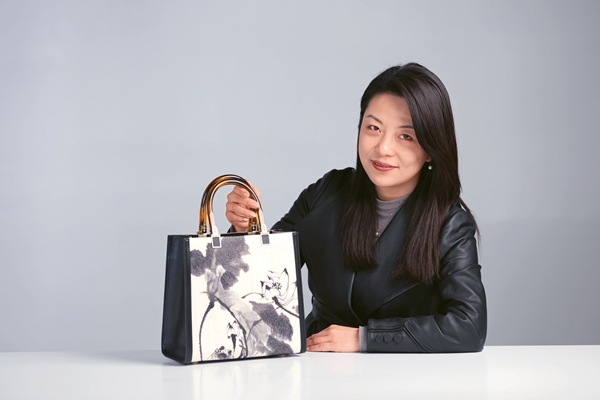
Going All Out for Cultural Inheritance
Wu, 37, has had a keen interest in painting since she was a child. In 2009, she graduated from the department of fine arts history of Guangzhou Academy of Fine Arts. She was recruited by a bank, but she longed for a career as an artist. "After I got to know my husband, he took me to visit some exhibitions of embroideries. Gradually, I developed an interest in xiabu embroidery," Wu recalls. She was deeply affected when she learned Zhang had gone all out to inherit and develop the craft.
"She has built a platform for those who have dreams of and a passion for xiabu embroidery. As I admired her endeavors to inherit xiabu embroidery, I decided to join her. I followed her while collecting embroideries in the countryside, and I supported her idea of establishing a xiabu embroidery museum," Wu says. "My love for traditional culture, and my sense of responsibility, especially regarding the inheritance of intangible culture heritage, are the reasons why I chose the industry, without reservation," Wu explains.
In 2014, Wu resigned her position with the bank so she could concentrate full-time on her work related to xiabu embroideries. She studied embroidery-making skills, and, with Zhang's help, she soon became a skilled embroiderer. In her pursuit of excellence, Wu often attended lectures at art schools, and she consulted masters of xiabu embroidery. Wu also explored ways of integrating intangible cultural heritage into modern life, especially by using her knowledge of fine arts and studying the principles of painting.
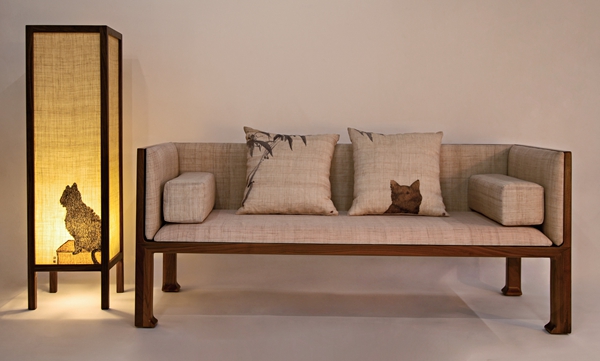
"Xiabu embroidery is a carrier of both xiabu and embroidery arts. It is passed down from generation to generation, and it embodies the values and wisdom of Chinese. Traditional xiabu embroidery patterns include flowers, birds and scenery, and the works are usually exhibited or collected as art. To discover more possibilities of xiabu embroidery, I have designed and produced some items for daily use, by combining the craft and other forms of crafts," Wu says.
One of Wu's masterpieces is a collection of furniture. The embroidered patterns on the furnishings come from the original paintings of Pu Sheng. Wu used a technique of xiabu embroidery that allows the threads to blend naturally into the cloth's texture. "The design of the works reflects my ideal life … Sitting on a comfortable sofa, one can listen to music or read, in the company of someone he/she loves," Wu explains.
She has also designed a collection of tote bags embroidered with patterns that represent Jiangxi's culture. During the China International Consumer Products Expo, held in April in Haikou, capital of south China's Hainan Province, Wu showcased xiabu embroideries, and the products attracted many visitors.

Innovative Approaches
"Actually, there are difficulties in the inheritance and development of xiabu embroidery. For example, it is hard to find qualified inheritors, and it is a challenge to make sure all of the inheritors command the crafts in a comprehensive and thorough way. Making innovations on the basis of the traditional characteristics of xiabu embroideries, dealing with the problems of financing, management, and marketing while industrializing intangible cultural heritage … These are challenges we have to meet," Wu says.
Wu has led her team in developing more than 500 items of xiabu embroideries, including bags and furnishings. To better promote the art form, the team has livestreamed seminars, to teach embroidery-making skills. While interacting with netizens, and by analyzing big data based on their livestreaming, the team has gained a better understanding of consumers' needs. That has helped the team develop new products.
Wu's team has promoted the inheritance and development of xiabu embroidery by integrating the cultural industry with tourism, education and science and technology. Their cultural products and services have injected new energy into Xinyu's economic development. "We have demonstrated making xiabu embroidery in some scenic spots, and we have invited tourists to make embroideries. In this way, tourists learn about xiabu embroidery, and relevant cultural products become a kind of tourism resource. Since the Xiabu Embroidery Museum opened in Xinyu, in 2014, it has received 30,000 visits, on average, every year," Wu says.
As for integration with education, Wu's team has established a training system for students, from various age groups, and has cooperated with Jiangxi Tourism and Commerce Vocational College to provide skills training, on a monthly basis, at Master Zhang Xiaohong's Studio.
"We have used modern technologies to protect intangible cultural heritage. We have established a database of Jiangxi's folk embroidery arts, and we have explored the integration of xiabu embroideries with digital products and media," Wu continues. With Wu and her team's efforts, the popularity of xiabu embroidery has increased in recent years.
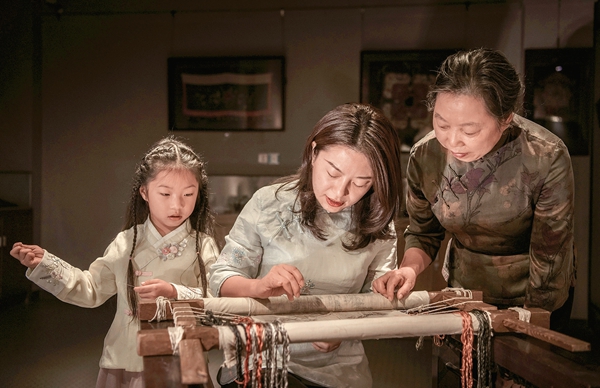
Telling Stories of Cultural Inheritance
To commemorate the bicentenary of the birth of Karl Marx, the main founder of Marxism, creator of Marxist parties and pathfinder for international communism, several exhibitions on Chinese culture were held in Marx's hometown, Trier, Germany, in 2018. Some xiabu embroideries were exhibited as representative of Jiangxi's culture. "We prepared 20 xiabu embroideries for the exhibition. Zhang Xiaohong, Zhang Suling (a municipal-level inheritor of xiabu embroidery) and I took six months to produce a portrait of Marx, and the portrait was collected by the city museum of Trier," Wu recalls.
She was proud xiabu embroideries were exhibited in a museum outside of China. "To promote and pass down xiabu embroidery is a common dream of all people who care about the art form. I hope our efforts will help more people learn about and fall in love with it," Wu says.
Wu, who was a delegate to the 13th National Women's Congress of China (in 2023), has implemented the spirit of the congress by providing practical services to women. She has helped build platforms to train and guide women college graduates in entrepreneurship, and she has participated in international cultural exchanges, especially among women, to showcase Jiangxi women's positive images through art.
"Given our advanced human resource management methods and achievements in the development of xiabu embroidery, my team won an award during China Women's Handicraft Innovation and Entrepreneurship Competition, in 2021. We have also helped talents in our industry attend assessments for professional titles and inheritors of intangible cultural heritage. Seven of our trainees were named national- and/or provincial-level inheritors or masters of arts and crafts," Wu says.
To encourage and help in-need women to create their own businesses, Wu's team has organized skills training in communities. "We have cooperated with women's federations and disabled persons' federations to establish training bases for entrepreneurship and employment promotion. The bases have trained some 30,000 people, and helped more than 2,000 people find employment," she says. Wu said her team will strengthen cooperation with women's federations, especially in providing flexible jobs to full-time mothers.
Wu and Zhang Xiaohong, both National March 8th Red-Banner Holders, have made the same resolution about inheriting and promoting xiabu embroidery. "Sometimes my mother-in-law and I have different opinions about the innovation of traditional crafts, but she supports most of my decisions. She is my role model. I will continue making concrete efforts to fulfill my mission of promoting xiabu embroidery," Wu says.
Photos by Ma Yan, Gu Qinqing and Li Chengsheng
(Women of China English Monthly May 2024)
Editor: Wang Shasha
Please understand that womenofchina.cn,a non-profit, information-communication website, cannot reach every writer before using articles and images. For copyright issues, please contact us by emailing: website@womenofchina.cn. The articles published and opinions expressed on this website represent the opinions of writers and are not necessarily shared by womenofchina.cn.

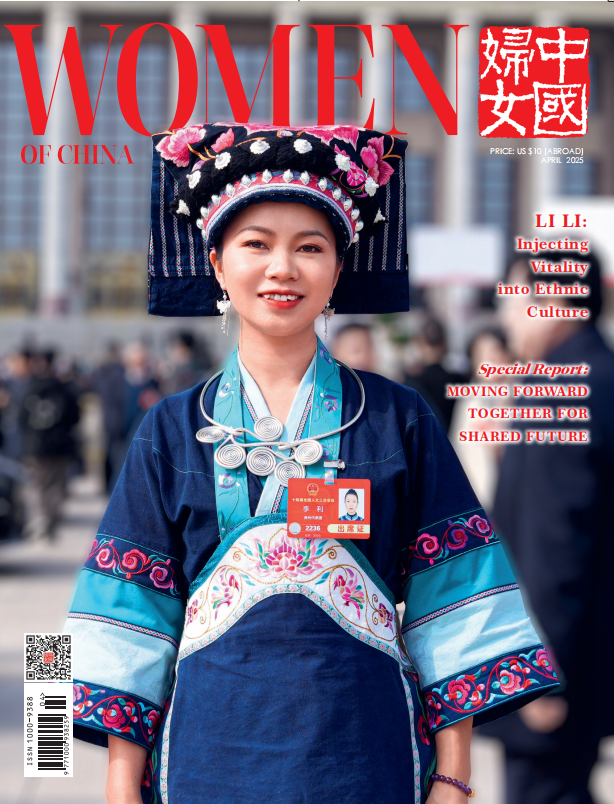






.jpg)

 WeChat
WeChat Weibo
Weibo 京公网安备 11010102004314号
京公网安备 11010102004314号